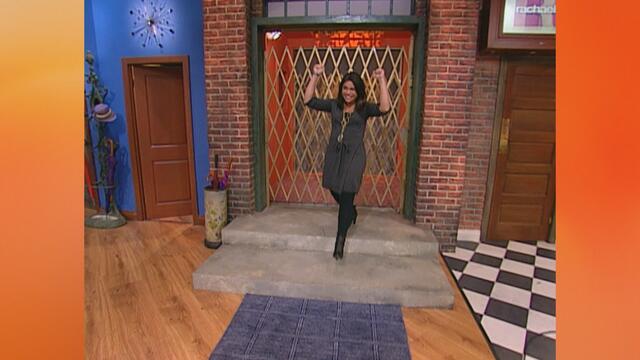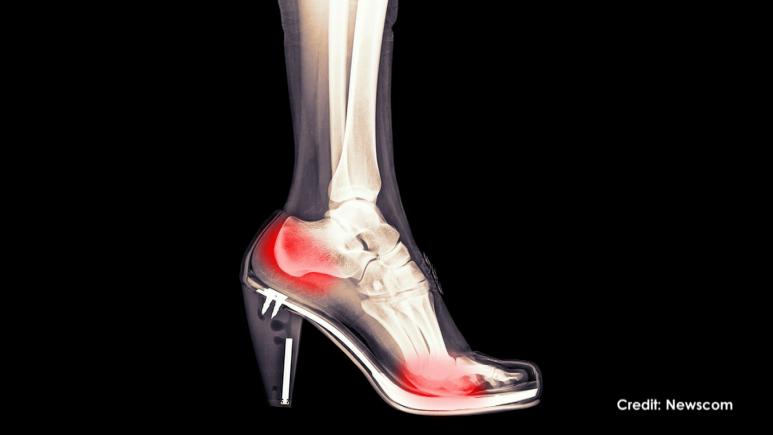

Easy Fixes For High Heel Pain, Arch Pain + Athlete's Foot | Dr. …

Q&A with Organizational Pro Peter Walsh + Dermatologist Shares A…

Actor Hank Azaria + Freezer Meals + Artichokes 2 Ways with Rach

See Inside Barbara Corcoran's Stunning NY Apartment + It's Steak…

How to Make Chicken and Lobster Piccata | Richard Blais

Donnie Wahlberg Spills Details About NKOTB's First Ever Conventi…

Donnie Wahlberg + Jenny McCarthy Say Rach Is Such a "Joy" + Look…

The Best Moments From 17 Seasons of the Show Will Make You Laugh…

How to Make Crabby Carbonara | Rachael Ray

Rach Chats "Firsts" In Flashback From Our First Episode Ever In …

How to Make Apple-Cider Braised Pork Chop Sandwiches with Onion …

Rach's Chef Pals Say Goodbye to Show in Surprise Video Message

How to Make Sesame Cookies | Buddy Valastro

How to Make Tortilla with Potatoes, Piquillo Peppers and Mancheg…

How to Make Shrimp Burgers | Jacques Pepin

How to Make Spanakopipasta | Rachael Ray

Andrew McCarthy Chokes Up Discussing Emotional Trip to Spain wit…

Celebrity Guests Send Farewell Messages After 17 Seasons of the …

Celebrity Guests Send Farewell Messages After 17 Seasons of the …

Andrew McCarthy Teases Upcoming "Brat Pack" Reunion Special

Michelle Obama Toasts Rach's 17 Years on the Air With a Heartfel…
Dr. Brad Schaeffer is one of the doctors on the new TLC show, "My Feet Are Killing Me" — a sentiment we can all relate to, right, ladies?
Which is exactly why we asked him to pop by the studio and help us put our best foot forward — literally! Below, he addresses three of your top foot concerns.
FOOT PROBLEM #1: My Feet Hurt From Wearing Heels Every Day
SOLUTION: Tennis Ball Massage + Frozen Water Bottle
Are you, like our viewer Kristin, in a profession that expects you to be on your feet in heels, all day long?
First: Girl, we're sorry! But second: Of course your feet are killing you, and Dr. Brad explains exactly why.
If you are wearing high heels all day, this can definitely cause pain in your feet. Some women describe it as feeling as if your "feet are on fire." When you're wearing heels, the weight of the body is shifted to the ball of the foot, resulting in pressure and joint pain. Your body is distributing weight on other muscles and causing distress, Dr. Brad explains. "Any time you have [a high heel on], it's going to be painful, because you're putting a lot of pressure in different areas where our foot is just not in a natural position," he says. (You can actually see how unnatural it is in the X-ray below!)

To help relieve the pain, Dr. Brad suggests rolling a tennis ball on your arch and the bottom of your foot, using a fair amount of pressure. "Everybody likes a good massage, and this tennis ball can really do that," he says.
But, when it comes to heels, you don't just have to worry about pain — you also have to worry about the potential of developing a neuroma (i.e. a pinched nerve that can make you feel like you're walking on a rolled-up sock, instigating both pain and numbness). The best thing you can do for this is not wear high heels long-term. Bring another pair of shoes with you to change into if you can.
Another thing that can happen is something called the "pump bump." This is when the soft tissue near the Achilles tendon becomes irritated when the bony enlargement rubs against shoes, according to the doc. This often leads to painful bursitis, which is an inflammation of the bursa, a fluid-filled sac between the tendon and bone.
Dr. Brad suggests wearing open back shoes such as clogs when you can, and icing the bump for 20- to 40 minutes per day to reduce swelling. You can also freeze a plastic water bottle and roll it on top of your foot, he says, which should help reduce the inflammation.
RELATED: E! News Co-Host Lilliana Vazquez Swears By This Spray To Prevent Blisters From Heels
FOOT PROBLEM #2: My Arches Are Killing Me
SOLUTION: Shoes With Better Arch Support + Shoe Inserts
Our viewer Lisa has a completely different issue, though it's also affecting her choice of footwear — her arches are a mess!
And, as Dr. Brad notes, she's certainly not alone. Typically, arch pain is felt on the bottom of the foot, but you may also feel pain in the top, or even in your ankles. Depending on the underlying cause, the pain may be worse when walking or standing, or during or after activities involving your feet.
When seeking relief from foot arch pain, you'll want to look for an insole with good cushioning, so you get corrected support that your foot may be lacking. But first, you'll need to determine what type of foot arch you have: low, normal or high.
You can do this by doing what Dr. Brad calls "The Water Test." He demonstrates by asking Lisa to step into a water basin, then step onto a rectangular piece of cardboard to create footprints, because prints are quite telling!
To do this at home, all you need is a shallow pan, water, and a piece of cardboard. Put one cup of water in the pan and step into it. Then place your foot flat on the cardboard. In the end, your footprint should match one of the illustrations on this arch chart:

In Lisa's case, she has a significant concavity in the center of her print, which means she has high arches — and, because she's in pain, that means she's probably not getting enough arch support.
One solution, of course, is to purchase a shoe with good arch support. But even if your shoe lacks that, Dr. Brad says you can walk into any drugstore and find a shoe insert that's specifically made for arch support. Insoles have different material options, the four most common being foam, gel, cork and leather. Each has their advantages, and the material you choose is largely based on preference. In general, however, foam works best for cushioning, support and pressure relief; gel works well for shock absorption; cork works well for support and slight cushion; and leather works well for cushion and "feel" (especially when worn with thin socks), according to Dr. Brad.
Even better, you can go to your local podiatrist, who can custom-make an insert that's perfect for your unique arch.
FOOT PROBLEM #3: I Keep Getting Athlete's Foot
SOLUTION: Apple Cider Vinegar and Water Soak
Last, but not least, LaToya shared her common issue — she's prone to athlete's foot.
So why does she keep getting it? And how should she treat it?
"Everyone probably has had athlete's foot in their life. Athlete's foot is actually a fungus," explains Dr. Brad. You can catch it through direct contact with an infected person, or by touching surfaces contaminated with the fungus. It's commonly found in showers, on locker room floors and around swimming pools.
Be mindful of having your feet in warm, moist environments — i.e. every time your foot is inside the sneaker at the gym. If you've got sweaty socks or shoes, you're going to want to choose a fresh pair, stat. And if you're prone to sweaty feet whether or not you're working out, he says, don't be afraid to sprinkle a little baby powder inside your shoe — it should do the trick for wicking away excess moisture.
"You want to kill that fungus for a variety of different reasons," he says, because the fungus can cause the foot to, "be dry, cracked, and it can become painful and itchy, which is really annoying." You may also notice itchy red bumps, according to Dr. Brad.
His treatment of choice? Mix apple cider vinegar with a little bit of water. "Soak your feet for about 15 minutes per day, and that will really help kill the fungus," the doc says. (Although, he also notes, a prescription from your podiatrist for a topical cream will clear it up even faster!)


